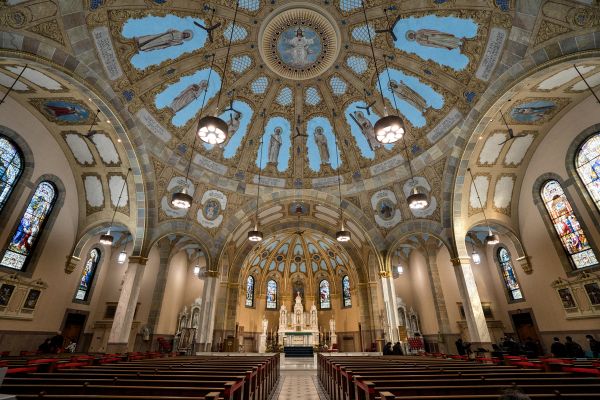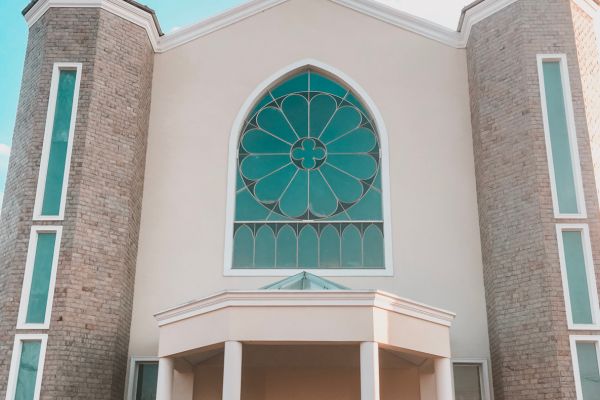Securing a loan for a church can be a crucial step in expanding ministry efforts, renovating existing facilities, or constructing new buildings. However, the process of obtaining a church loan comes with its own unique set of requirements and considerations. This comprehensive guide will walk you through the essential church loan requirements, helping religious organizations navigate the complex world of faith-based financing.
Church Loans
Church loans are specialized financial products designed to meet the unique needs of religious organizations. These loans can be used for various purposes, including:
- Purchasing land or buildings
- Constructing new facilities
- Renovating or expanding existing structures
- Refinancing existing debt
- Funding ministry programs or operational expenses
Before diving into the specific requirements, it’s important to understand that church loans differ from traditional business or personal loans due to the nature of religious organizations and their income sources.
Key Church Loan Requirements
1. Legal Structure and Documentation
One of the first requirements for obtaining a church loan is proper legal documentation. Lenders will typically require:
- Articles of Incorporation
- Bylaws
- 501(c)(3) tax-exempt status documentation
- List of board members or trustees
These documents prove that your organization is a legitimate, recognized religious entity and has the legal authority to enter into financial agreements.
2. Financial Statements and Records
Lenders need to assess the financial health of your church to determine its ability to repay the loan. You’ll typically need to provide:
- 2-3 years of financial statements (balance sheets, income statements, cash flow statements)
- Current year-to-date financial reports
- Bank statements for the past 6-12 months
- Detailed budget projections for the next 2-3 years
Ensure that your financial records are accurate, up-to-date, and professionally prepared. Many lenders prefer audited financial statements, especially for larger loan amounts.
3. Consistent Income and Giving History
Churches primarily rely on donations and tithes from their congregation for income. Lenders will want to see:
- A stable or growing trend in giving over the past 2-3 years
- Diversified income sources (e.g., tithes, offerings, fundraising events, rental income)
- Detailed records of giving patterns and donor demographics
A consistent income history demonstrates the church’s financial stability and ability to meet loan obligations.
4. Debt Service Coverage Ratio (DSCR)
The DSCR is a key metric used by lenders to assess a church’s ability to repay the loan. It’s calculated by dividing the church’s net operating income by its total debt service. Most lenders require a DSCR of 1.25 or higher, meaning the church’s income should be at least 25% more than its debt obligations.
5. Loan-to-Value Ratio (LTV)
For loans secured by property, lenders will consider the loan-to-value ratio. This is the loan amount divided by the appraised value of the property. Most church lenders prefer an LTV of 75% or lower, meaning they’ll lend up to 75% of the property’s value.
6. Membership and Attendance Records
Lenders want to see a stable or growing congregation, as this indicates the potential for sustained or increased giving. Provide:
- Detailed membership records for the past 3-5 years
- Average weekly attendance figures
- Information on membership growth initiatives
7. Leadership Stability
The stability of church leadership is an important factor. Lenders may require:
- Resumes or biographies of key leadership (pastor, board members)
- Information on leadership tenure and succession plans
- Evidence of strong governance practices
Long-term, stable leadership often correlates with consistent financial management and growth.
8. Ministry Programs and Community Impact
While not directly financial, information about your church’s programs and community impact can strengthen your loan application. Provide details on:
- Outreach programs
- Community services
- Mission work
- Educational initiatives
These demonstrate the church’s value to the community and its potential for continued growth and support.
9. Property Information (for Secured Loans)
If the loan is secured by property, you’ll need to provide:
- Property appraisal
- Title insurance
- Environmental assessment
- Architectural plans and cost estimates (for construction or renovation projects)
10. Collateral
Most church loans require some form of collateral. This is typically the church property itself, but could also include:
- Other real estate owned by the church
- Investments or endowments
- Personal guarantees from board members (less common)
11. Loan Purpose and Project Plans
Clearly outline the purpose of the loan and provide detailed plans for how the funds will be used. This may include:
- Architectural drawings for construction projects
- Vendor quotes for equipment purchases
- Strategic plans for ministry expansion
The more detailed and well-thought-out your plans, the more confidence lenders will have in your ability to manage the loan effectively.
12. Insurance Coverage
Lenders will require proof of adequate insurance coverage, including:
- Property insurance
- Liability insurance
- Workers’ compensation insurance (if applicable)
- Key person insurance on senior leadership (sometimes required)
13. Debt Management History
If your church has existing or previous debt, lenders will want to see a history of responsible debt management. This includes:
- Timely payments on existing loans
- Successful completion of past capital campaigns
- Responsible use of credit facilities
A strong track record in this area can significantly improve your chances of loan approval.
Preparing for the Loan Application Process
Once you understand the requirements, it’s essential to prepare thoroughly for the loan application process:
- Gather all required documentation: Organize all financial records, legal documents, and other required information well in advance.
- Review and improve financial health: Look for ways to strengthen your financial position before applying. This might include increasing giving, reducing expenses, or paying down existing debt.
- Develop a comprehensive loan proposal: Create a detailed document outlining your loan request, including the amount needed, purpose, repayment plan, and how it aligns with your church’s mission and growth plans.
- Engage your congregation: Keep your members informed about the loan process and its purpose. Their support will be crucial for successful repayment.
- Seek professional advice: Consider working with a financial advisor experienced in church loans to help navigate the process and improve your application’s strength.
- Research potential lenders: Look for lenders specializing in church loans, as they’ll better understand your unique situation and requirements.
- Prepare for due diligence: Be ready for lenders to conduct thorough due diligence, including site visits and interviews with leadership.
Challenges in Securing Church Loans
While church loans can be invaluable for growth and development, there are some challenges to be aware of:
- Stricter requirements: Due to the unique nature of church income, lenders often have stricter requirements compared to traditional business loans.
- Limited options: Not all lenders offer church loans, which can limit your choices and potentially lead to less favorable terms.
- Collateral issues: Some churches may struggle to provide sufficient collateral, especially if they don’t own property.
- Fluctuating income: Churches often experience seasonal fluctuations in giving, which can concern lenders.
- Leadership transitions: Changes in pastoral leadership can impact loan approval or terms.
- Regulatory considerations: Churches must navigate regulations around tax-exempt status and use of funds.
Alternative Financing Options
If traditional church loans prove challenging, consider these alternatives:
- Bond programs: Some churches issue bonds to their members or the public to raise funds.
- Capital campaigns: Focused fundraising efforts can reduce the amount you need to borrow.
- Denominational loans: Some denominations offer loan programs to member churches.
- Community Development Financial Institutions (CDFIs): These organizations often have more flexible lending criteria for community-focused entities like churches.
- Lease-to-own arrangements: For property acquisitions, this can be a way to secure a location with less upfront capital.
Conclusion
Securing a church loan requires careful preparation, strong financial management, and a clear vision for your organization’s future. By understanding and meeting the key requirements outlined in this guide, you’ll be well-positioned to obtain the financing needed to support your church’s growth and mission.
Remember that each lender may have slightly different requirements, so it’s essential to communicate openly with potential lenders and seek professional advice when needed. With the right approach and preparation, a church loan can be a powerful tool for expanding your ministry and serving your community more effectively.
Frequently Asked Questions
- Q: What is the typical interest rate for church loans? A: Interest rates for church loans can vary widely depending on factors such as the church’s financial health, loan amount, and current market conditions. Generally, rates range from 4% to 8%, but can be higher or lower based on the specific circumstances.
- Q: How long are the typical terms for church loans? A: Church loan terms can range from 5 to 30 years, with 15-20 years being common for mortgage-type loans. Shorter terms may be available for smaller loans or specific projects.
- Q: Can a new church qualify for a loan? A: While it’s more challenging, new churches can potentially qualify for loans. However, they may face stricter requirements, higher interest rates, or may need to seek alternative financing options like denominational support or private investors.
- Q: Is personal guarantee required for church loans? A: Personal guarantees are less common for church loans compared to business loans, but some lenders may require them, especially for newer churches or larger loan amounts. This is often a point of negotiation with the lender.
- Q: How important is the church’s credit score for loan approval? A: While churches don’t have personal credit scores, their financial history and debt management are crucial. Lenders will look at factors similar to a credit score, such as payment history on existing debts and overall financial management.
- Q: Can a church use a loan for operational expenses? A: While most church loans are for capital expenditures like property or construction, some lenders do offer loans for operational expenses. However, these may have different terms and requirements compared to capital loans.
- Q: How much of a down payment is typically required for a church loan? A: Down payment requirements can vary, but many lenders require 20-25% down for property purchases. Some may require as much as 30-35%, while others might offer options with lower down payments for well-qualified churches.
- Q: Are there government-backed loan options for churches? A: While there are no specific government-backed loan programs for churches like there are for small businesses, churches may be eligible for certain community development programs or loans from CDFIs that receive government support.
- Q: How long does the church loan approval process typically take? A: The approval process for a church loan can take anywhere from 30 to 90 days, depending on the complexity of the loan, the completeness of the application, and the lender’s process.
- Q: Can online giving trends affect loan approval? A: Yes, many lenders now consider online giving trends as part of their evaluation. A strong and growing online giving program can positively impact your loan application, as it demonstrates adaptation to modern giving methods and potentially broader financial support.







